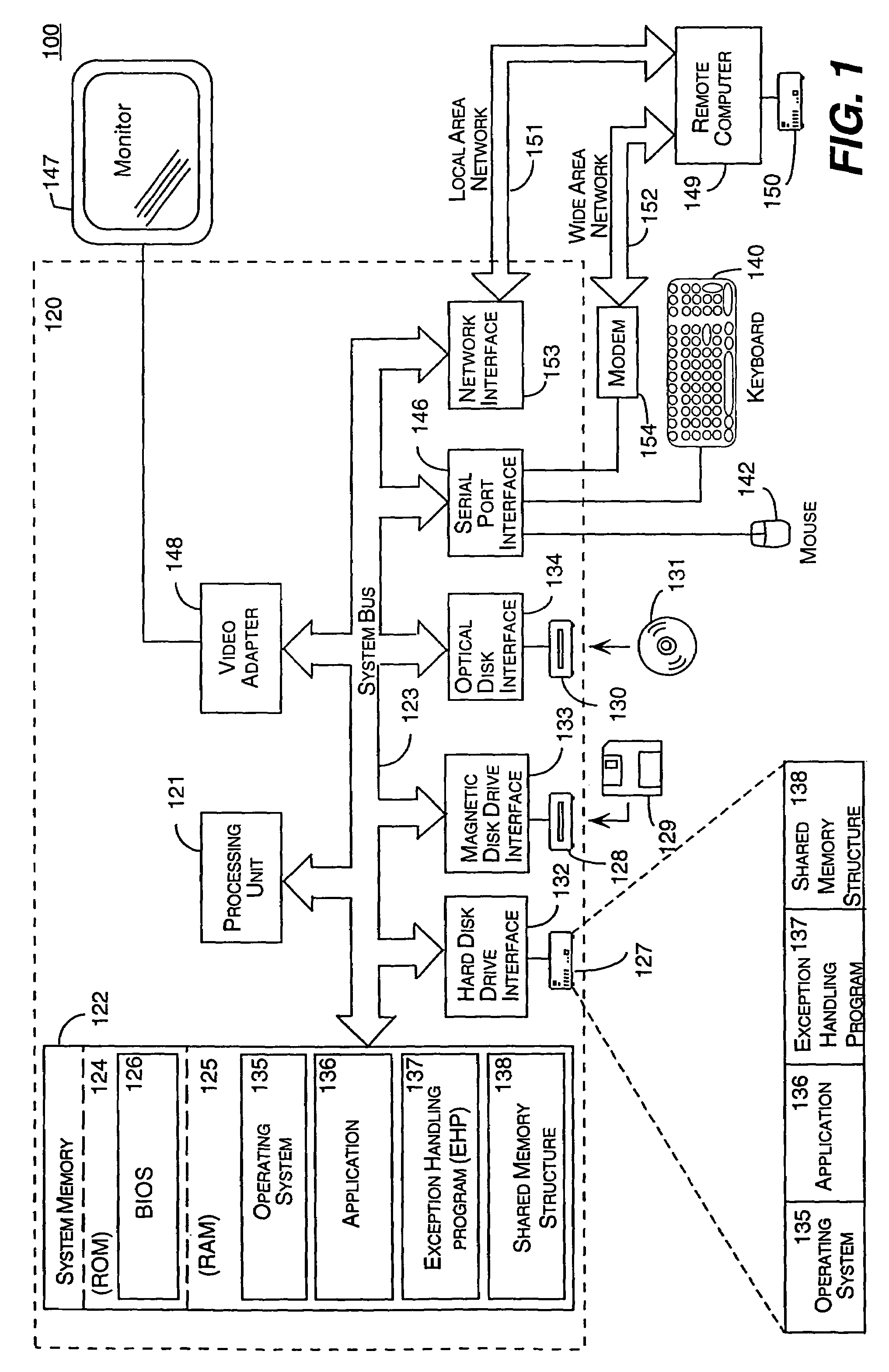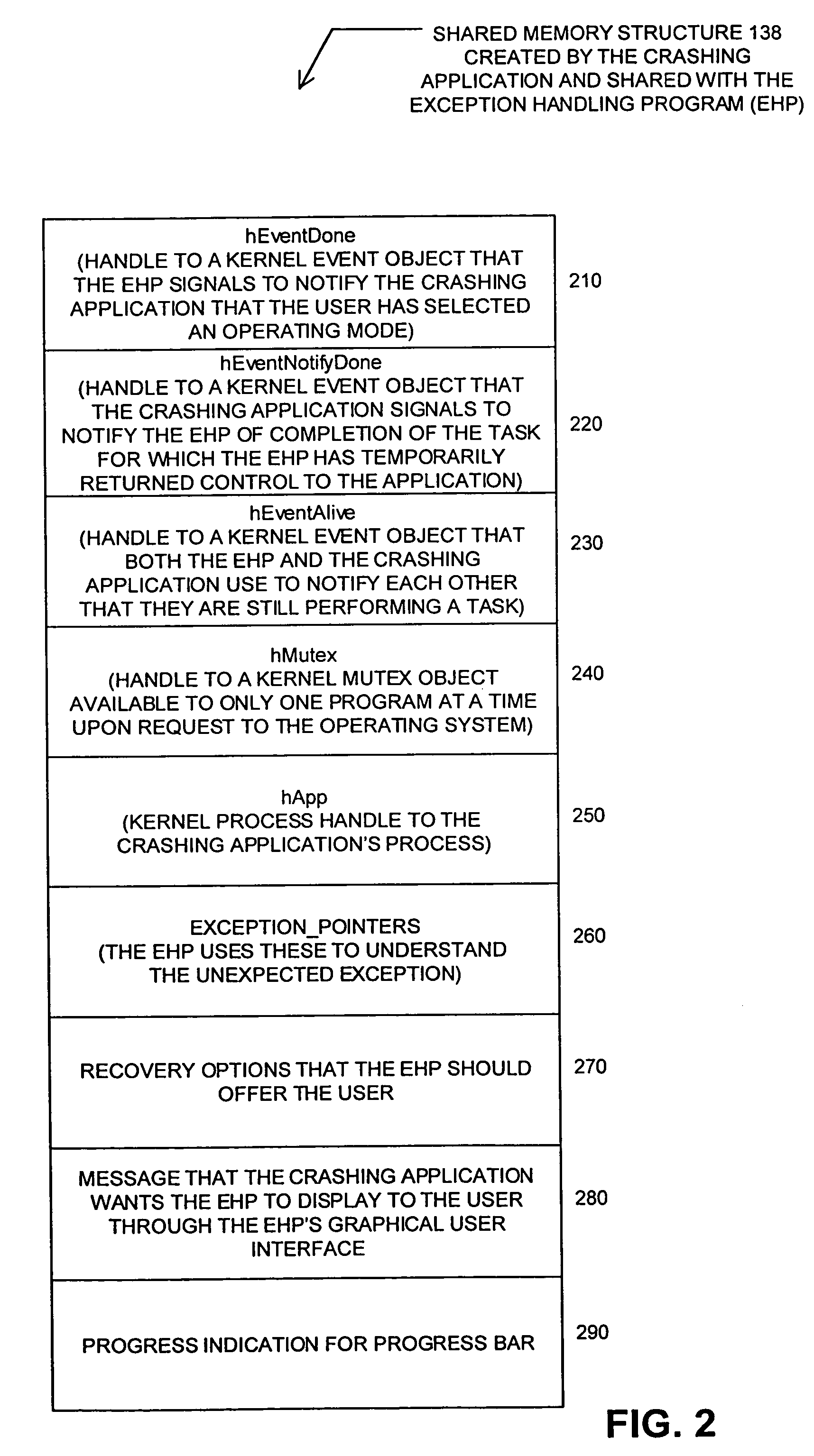Method and system for handling an unexpected exception generated by an application
a technology of unexpected exceptions and methods, applied in the field of computer software applications, can solve problems such as application crash, application complexity, application software application crashes, etc., and achieve the effect of greater safety
- Summary
- Abstract
- Description
- Claims
- Application Information
AI Technical Summary
Benefits of technology
Problems solved by technology
Method used
Image
Examples
Embodiment Construction
[0025]The present invention is typically embodied in a computer-implementable method for handling the generation of an unexpected exception by an application. Colloquially, people say that an application has “crashed” when the application generates such an unexpected exception. When the application generates an unexpected exception (i.e., crashes), the application's exception filter launches an outside exception handling program (EHP) that is separate and distinct from the application. Through a special protocol, the application and the EHP collaborate in responding to the unexpected exception.
[0026]In this protocol, the application and the EHP communicate through kernel objects accessible by handles in a shared memory structure that the application creates before launching of the exception handling program and then shares with the EHP. Through the shared memory, the application also provides the EHP with information about the types of recovery options to offer the user.
[0027]Throug...
PUM
 Login to View More
Login to View More Abstract
Description
Claims
Application Information
 Login to View More
Login to View More - R&D
- Intellectual Property
- Life Sciences
- Materials
- Tech Scout
- Unparalleled Data Quality
- Higher Quality Content
- 60% Fewer Hallucinations
Browse by: Latest US Patents, China's latest patents, Technical Efficacy Thesaurus, Application Domain, Technology Topic, Popular Technical Reports.
© 2025 PatSnap. All rights reserved.Legal|Privacy policy|Modern Slavery Act Transparency Statement|Sitemap|About US| Contact US: help@patsnap.com



